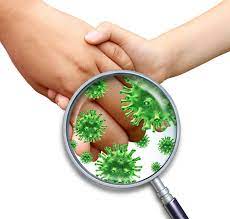Prevention is often more effective and could be less costly than treatment, especially when dealing with various health conditions and diseases. Taking proactive steps to maintain good health, such as adopting a healthy lifestyle, and avoiding known risk factors, can significantly reduce the likelihood of developing illnesses.
Here are just some of the prevention services MDAnywhere has to offer:
With college students returning, unfortunately lice will too. There are three primary types of lice that infest humans: head lice (Pediculus humanus capitis), body lice (Pediculus humanus corporis), and pubic lice (Pthirus pubis). Head lice are commonly found on the scalp and neck, body lice infest clothing and bedding and move onto the body to feed, while pubic lice mainly reside in coarse body hair, such as the pubic area. All are very contagious and spread by direct contact with another person.
The most common symptom of lice infestation is intense itching in the affected area. Scratching can lead to skin irritation and secondary infections.
Treatment typically involves the use of over-the-counter or prescription medicated shampoos, lotions, or creams containing pediculicides to kill the lice and their eggs (nits).
Additionally, it is essential to wash all infested clothing, bedding, and personal items in hot water and vacuum furniture to remove any remaining lice or eggs.
After someone is diagnosed with body lice, all of the people they live with or are in close contact with should be treated, even if they lack symptoms.
Avoid the chaos and start lice prevention!
Lyme disease, transmitted through tick bites, can lead to various symptoms and requires timely treatment. In the early stages, individuals may experience flu-like symptoms such as fever, fatigue, headache, muscle aches, and a characteristic skin rash called erythema migrans. If left untreated, Lyme disease can progress to more severe symptoms, including joint pain, neurological issues, and cardiac complications.
Preventing Lyme disease from tick bites is essential for maintaining good health. To reduce the risk of contracting Lyme disease, individuals should take several preventive measures. When spending time in wooded or grassy areas, wear long-sleeved shirts, long pants, and closed-toe shoes to minimize skin exposure. Use tick repellents containing DEET or picaridin on exposed skin and clothing and regularly check for ticks.
If you have been bitten, don't wait. Seeking medical attention as soon as possible after a deer tick bite and being vigilant for any symptoms can improve the chances of successful treatment and recovery from Lyme disease.
Motion sickness, also known as travel sickness, occurs when there is a disconnect between what the eyes see, the body feels, and the inner ears sense in terms of motion. This sensory conflict disrupts the brain's perception of movement, leading to symptoms like dizziness, nausea, vomiting, sweating, and fatigue. It commonly occurs during car rides, boat trips, air travel, or amusement park rides.
To prevent motion sickness, individuals can focus on a fixed point outside the moving vehicle, avoid reading or using digital devices, keep the head still, and sit in the front seat of a car or over the wings on an airplane. Medications like antihistamines or scopolamine patches can also alleviate symptoms.
Don't let motion sickness ruin your trip! Seek prevention at MDAnywhere.
Scabies is a contagious skin infestation caused by the Sarcoptes scabiei mite. The mites burrow into the top layer of the skin to lay eggs, resulting in intense itching and a characteristic rash. Scabies can be acquired through direct skin-to-skin contact with an infested person or by sharing infested bedding, clothing, or towels.
To prevent scabies, individuals should avoid close contact with infected individuals and refrain from sharing personal items.
Know someone who was diagnosed with scabies? Prevention is key to prevent further spread.
Anaphylaxis is a severe and potentially life-threatening allergic reaction that occurs when the body's immune system overreacts to a specific allergen. Common triggers for anaphylaxis include certain foods (e.g., peanuts, tree nuts, shellfish), insect stings (e.g., bee or wasp stings), medications (e.g., antibiotics, NSAIDs), and latex. Symptoms of anaphylaxis can develop rapidly and may include difficulty breathing, swelling of the face and throat, hives or skin redness, rapid heartbeat and nausea. In severe cases, anaphylaxis can lead to a drop in blood pressure and loss of consciousness.
Prevention is crucial, and individuals with known allergies should avoid exposure to their triggers and carry an epinephrine auto-injector. Immediate administration of epinephrine is the first-line treatment for anaphylaxis and should be followed by seeking emergency medical attention.
What Other Prevention Therapies Does MDAnywhere Offer?
Birth control, Influenza (flu) prevention, Naloxone for opiate overdose, Cologuard colon cancer screening, Whooping cough (Pertussis) prevention and more! Visit MDAnywhere to see all our prevention therapies!
Learn how MDAnywhere can treat you with medication prescribed IMMEDIATELY and sent to the pharmacy of your choice the same day. No appointment, subscription or video chat ever needed.
Disclaimer: The content provided above is for informational purposes only and should not be construed as medical advice. Please consult with your healthcare provider or visit MDAnywhere for treatment.

